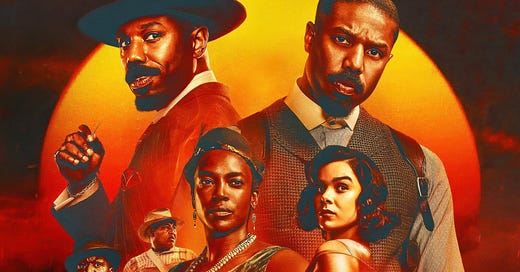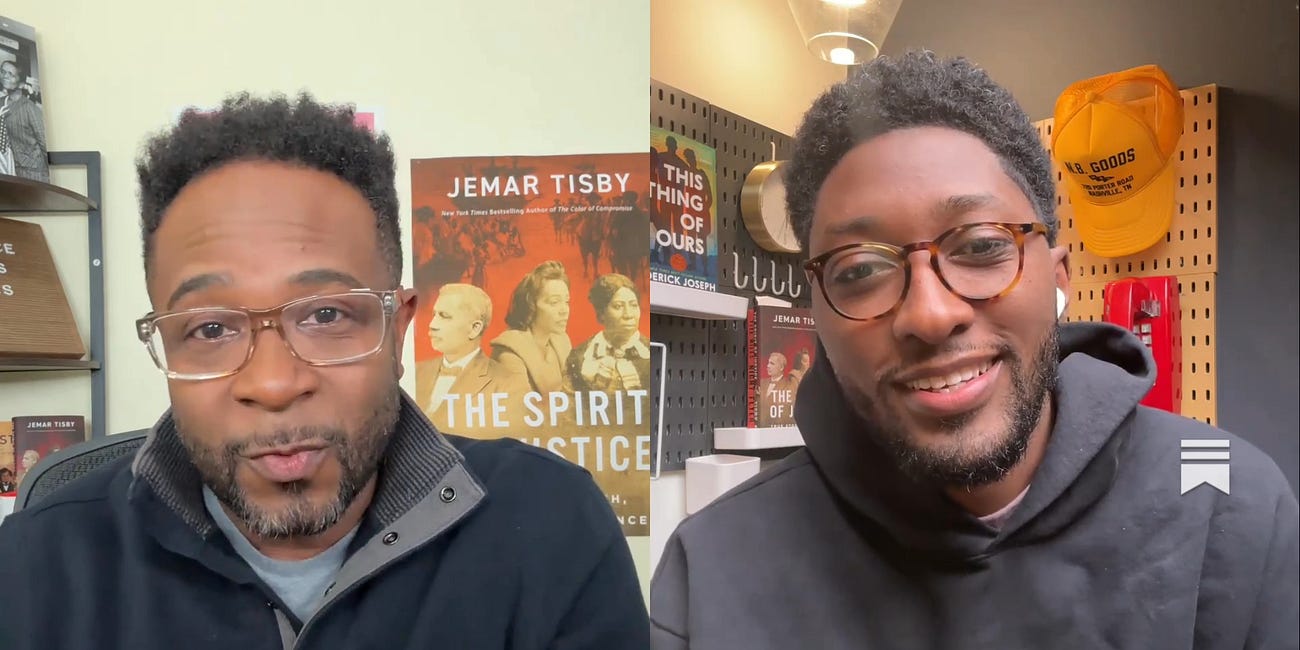Less than FIVE PERCENT of my readers are paid subscribers. If you support his work you can unleash my time to do more cultural commentary like the content below. Become a paid subscriber today.
When I first saw Sinners in theaters, I wasn’t watching it purely as a moviegoer. I was watching it as a historian.
The opening scene situates us in Clarksdale, Mississippi, 1932—deep in the Mississippi Delta.
In Sinners the 1930s Mississippi Delta is more than a backdrop, it is a canvas to tell stories about the afterlives of slavery, about Black joy amid oppression, and about how culture and spirituality become tools of resistance.
With Sinners hitting streaming platforms on June 3, don’t miss the history behind the horror.
It’s easy for much of the historical context to remain hidden.
That’s why I collaborated with Dr. Keisha Blain—co-founder of the African American Intellectual Historical Society and author of Until I Am Free—to create the #SinnersMovieSyllabus.
Also featured in The Grio.
Read more below…
Introducing...The "Sinners" Movie Syllabus
From concept to publication, this article took two days. I was also on a podcast retreat and caught a 6 am flight in that time. To make projects like this happen so quickly, I need your support. Become a paid subscriber today.
What You Might Have Missed Watching Sinners:
Plantation money (“scrip”)
Clarksdale as the birthplace of Blues music
Convict leasing
Rural Black churches
Hoodoo and Black spiritual traditions
Jim Crow South in 1932
Chinese immigrants to the Delta
The Choctaw nation
We talk about all of the above topics and more on a special Live Substack I did with my friend and Webby award-winning creative,
.More than 700 people joined us live for this conversation. You can catch the replay below:
When viewers understand this context, the film becomes more than entertainment. It becomes a meditation on how Black resistance takes many forms—faith, music, ritual, defiance. And how Black people found ways to cultivate a vibrant culture even in the context of racism and white supremacy.
If this work speaks to you, I’d love for you to share it using #SinnersMovieSyllabus—and tag Ryan Coogler, Michael B. Jordan, and other actors and creators who brought the film to life.
History is never simply about the past. Sinners demonstrates history has an afterlife with even more longevity than any vampire.







This old white lady went traipsing into the theater knowing nothing about the movie, except Dr T said it was good and had a lot of history in it. So I went expecting historical fiction, like “To Kill A Mocking Bird” or something. But after all the horror movie previews, I was really confused, lol. Then, the magical things started happening in the movie, and then, VAMPIRES! I love a good vampire movie and this one is great. And I loved that my favorite creatures of the night showing up was a surprise for me. Michael B. Jordan should get every award there is. He was flawless and inexhaustible. Anyway, I knew and saw all your points above, except that the blues started in Clarkson. That’s really cool. Two scenes stand out, aside from the horror. The first is when Lisa leaves the general store filled with Black people, walks across the street and down the block to an identical store filled with white people. The camera follows her every step, and we see the gradual shift in population demographics as she experiences it. Brilliant. The second scene that I absolutely love is when they’re all dancing in the club and the ancestors appear. Gorgeous costumes, and the music just transports you. Truly magical. I also love it when violent bigots are served justice by the people they sought to kill. Thanks for the recommendation, Dr. Trisby! I haven’t had this much fun at a movie in ages.
I’m very glad I watched the teach in you did with Garrison Hayes before seeing the movie. I got so much more out of it by understanding more of the context. The thing I’ve been thinking about is how the juke joint music scene is a great portrayal of unity among difference and how it ties in to Pentecost. Miroslav Volf in Exclusion and Embrace talks about how Pentecost overcomes the confusion of Babel, “but it does so not by reverting to the unity of cultural uniformity but by advancing toward the harmony of cultural diversity.” To me the juke joint scene portrays this beautifully. Thank you so much for your teach in, which helped me see that.